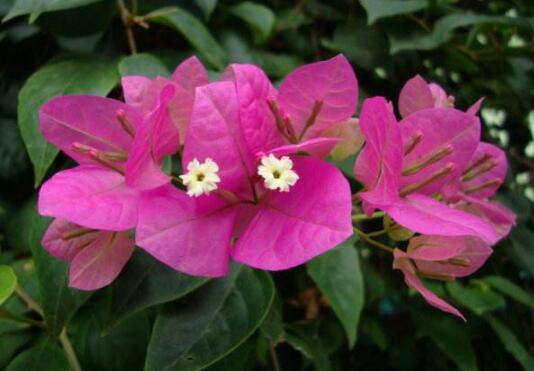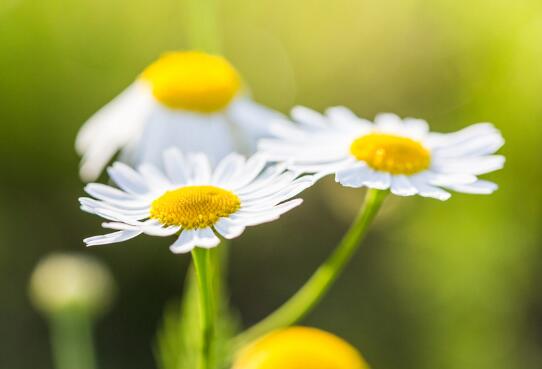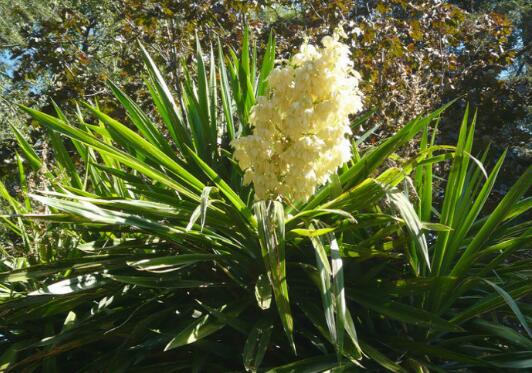How to cut light leaves, light leaves cutting method/spring sowing survival rate is high
Bare-leaf flower is a common flower plant in people's life, which is highly ornamental and is cultivated in various areas. With the increase in the number of farmers, people are more concerned about its reproduction, and its reproduction method is generally based on cutting propagation. So what season is the bare leaf flower cuttage? What is the season of cuttage of bare leaf flower? Next, the editor will take you to learn about it.
First, how to cut the bare leaf flower, the best from April to May.

When we are preparing for cuttage propagation, it is very important to choose a right period of time, generally we can choose this time from May to June, because the climate of this period is more suitable for its growth, and the success rate of cutting will also be greatly improved.
Second, the cutting method of bare-leaf flower.
1. The selection of matrix and good drainage
Before we cuttage the bare-leaf cotyledon, we should first choose the substrate, which is not strict with the soil, but it is afraid of stagnant water, so we had better choose the culture soil with loose, fertile and good drainage. Generally, we can choose the culture soil prepared with 4 parts of humus soil, 4 parts of garden soil and 2 parts of sand, and we can also use sun-drying pond mud mixed with some coal cake dregs as basin soil.
two。 Matrix disinfection, high temperature disinfection
After we have selected the substrate, it is best to disinfect it first so as not to infect the flower with bacteria. During disinfection, we can break it up and disinfect it in the sun. You can also stir-fry it in an iron pan over high fire, so that even bacteria will be killed.
3. Selection of cuttings and branches with strong growth
The selection of cuttings also has a great impact on the survival rate of bare-leaf flower cuttings. in general, it is better to choose branches with relatively robust growth and no diseases and insect pests as cuttings. If the branches we choose look very slender, then we can basically judge that the cuttage failed, so the selection of cuttings is a very important step.
4. Cuttage method, rooting in a month
When it comes to how to cut the bare-leaf flower, the method is actually very simple. First of all, we can use chopsticks to cut a hole in the soil, and then insert the cuttings, because the branches of the bare-leaf flower are more easily damaged, and if inserted directly, it is easy to hurt the roots. We can water the cuttings after we insert them, and they can take root a month or so after watering.
5. Follow-up management, pay attention to daily maintenance
After the cuttings take root, we can declare that the cuttings are successful, and then we can carry out follow-up conservation, and there are also many points that need to be paid attention to in maintenance, such as watering, fertilization and so on. If you don't know how to raise it, you can refer to the article on the breeding methods of Flos glabra, in which there is detailed teaching.
Annual grass flower cutting method annual grass flower refers to the herbaceous flowers whose life is completed in a growing season from sowing, growth, flowering, fruiting to aging and death. Generally, they sow in spring, grow in summer and autumn, blossom and bear fruit, and then die, so annual flowers are also called spring sowing flowers. in South China, most of them are annual flowers, perennial flowers are not easy to bloom on flat land. Annual flowers have a short cultivation period and usually bloom within 2-6 months. after flowering and fruiting, they will die naturally, such as pansy, zinnia, cockscomb, a string of red, peacock grass, big Persian chrysanthemum, calendula and so on.
The annual flowers with thicker cuttings can be cut directly into the pot, and the waste branches can be reused when the sowing amount is not enough. Moreover, the seed price of good varieties of grass flowers is higher, which can reduce the cost. Rapid cutting culture greatly shortens the production cycle, reduces the production process, and saves manpower and material resources. The annual flower varieties that can be cut are a string of red, marigold, malachite, carnation, periwinkle, beauty cherry and so on. The author fumbled out the rapid culture technology of cutting in the production practice, the following is briefly described as follows: first, pot soil selection culture soil according to the requirements of potted flower culture soil, first, loose, second, good water permeability, third, to maintain water and nutrients; fourth, moderate acidity and alkalinity, fifth, sterilization and disinfection. The author sifted the garbage that had been stored for four or five years, mixed with a certain amount of sand or river mud, and disinfected it with drugs as culture soil. Generally should not be mixed with organic fertilizer, so as not to burn cuttings. Second, the cutting time is in summer and autumn, with a temperature of 20 ℃ to 32 ℃, preferably in the afternoon, preferably in overcast and rainy days. Third, select cuttings standard to choose robust, pest-free twigs as cuttings, each cuttings 8 to 10 cm long, with more than 2 nodes, leaves can be left at the top as appropriate. All the top heart leaves of marigold can be left, and a bunch of red flowers can also leave more leaves without affecting the plant shape, but all the leaves inserted into the branches under the soil should be removed and the cut should be smooth. Fourth, after the mixture of 2.5% to 5% rooting agent and 50% carbendazim wettable powder, half of the cuttings are immersed in the solution for 5 to 10 seconds. When cutting marigold with thicker branches, rooting agents and carbendazim are not used, and the survival rate can reach more than 95%. Fifth, cuttings are required to be cut and soaked with cutting and inserted into more than half of the soil, leaving the leaves of the main branches and some side branches in the center of the flowerpot, watering immediately after planting, and spraying and washing leaves. 6. Management after insertion. 1. The shade was placed under the shade shed for 7 to 10 days, and after rooting, it was placed in the open field, in which the rooting rate of marigold cuttings was more than 90% under full light conditions. It is better to take root in shady environment, it is easier to take root in the forest with canopy density of 0.7 to 0.8, and other varieties are placed under the shade net. 2. Spray because the weather is hot when the cuttings are on the pot, so the number of times of spraying water is not less than two times a day, or even 3 to 5 times, to keep the leaves from wilting and the basin soil moist. After 7 to 10 days, the branches and leaves are still green, gently lift the seedlings with two fingers, and there is no water stain at the bottom of the branches, indicating that the cuttings have taken root and can stop spraying and water regularly so as not to grow in shade. 3. After a certain period of growth, topdressing seedlings have grown more tender leaves, which can be used for foliar spraying. 0.5% urea and potassium dihydrogen phosphate are sprayed, and cake fertilizer and water can be poured. 4. Prevent pests and weeds from red spiders, moths and snails, and remove weeds in time. Increase the distance between pots in time when the seedlings grow up. How to reproduce Gardenia jasminoides? what about the yellow leaves of Gardenia jasminoides?
Gardenia is very ornamental, so many people will breed at home, but because they do not know much about gardenia, there is often the phenomenon of gardenia leaves yellowing, how to do? Today, I will introduce to you the relevant knowledge about gardenia.
How to reproduce gardenia
1. Cutting method
The branches of Gardenia jasminoides are easy to take root, the warm ground in the south is often in March-October, and the north is often cut in May-June, cutting sturdy mature branches and planting them on the sand bed. As long as they are often kept moist, they are very easy to take root and survive. Water insertion is far better than soil insertion, with a survival rate of nearly 100% from April to July. Cut cuttings retain only the top 2 leaves and terminal buds in containers filled with clear water, often change water to avoid incision decay, and begin to take root after 3 weeks.
2. Strip pressing method
It is generally carried out before and after the Qingming Festival in April or in the Meiyu season. In April, one-year-old strong branches are selected from the 3-year-old mother plant, which are 25cm long and 30cm long. They are pulled to the ground, and the buried parts of the branches are scratched. If they can be dipped in 200ppm powder acetic acid and then covered with soil compaction, it is easier to take root. If there are trigeminal branches, you can get three seedlings at the fork at a time. Generally, it can take root after 20-30 days, can be separated from the mother plant after rooting in June, and can be planted separately with soil or a single plant in the next spring.
Spring is the best way to transplant seedlings or potted plants, and it is necessary to bring soil balls in the rainy season. Keep the soil moist during the growing period, and water more during flowering and midsummer. Fertilize once a month and increase phosphorus and potassium fertilizer before flowering. Pruning and shaping in the early spring of the following year, and cut off dead branches and long branches in time.
3. Sowing method
Generally choose full, dark red ripe fruit, even shell sun or dry as a seed, before sowing, use scissors to cut the seed pericarp, dig out the seed, rub in hot water to disperse, remove floating seeds or impurities, and then remove the sunken full seed, spread it on the bamboo mat, put it in a ventilated place to dry too much moisture. Generally choose Xiangyang hillside or Tufang, the soil layer is deep, loose and fertile sandy loam sowing, you can use the field edge corner planting, or interplanting with legumes. Before planting, plough the land 1 to 1.5 feet, remove miscellaneous trees, set up the border according to the width of 4 to 5 feet (the soil quality is better, the distance can be larger, otherwise it is smaller), the border is 6 inches high, and soil manure, green manure or human and animal manure can be used as base fertilizer, for example, 20,30 piculs of human manure per mu should be applied, and the soil should be raked after the soil is dried to level the border surface. Sow the ditch at a distance of 6 to 7 inches on the border surface, and the ditch is about 1 inch deep to be sown.
Gardenia can be sowed in spring or autumn, generally in spring, spring sowing before and after Rain Water, autumn sowing before and after the Autumn Equinox, seeds mixed with fire ash evenly sown in the sowing ditch, and then cover the flat sowing ditch with fine soil or fiery soil, cover the grass with water, and often keep the soil moist to facilitate seedling emergence, with seeds of 4 kilograms per mu. After emergence, we should pay attention to remove the cover grass in time, weed frequently in the seedling stage, be careful not to hurt the roots of the seedlings, need to dilute human feces and urine after weeding, and can be transplanted after raising seedlings for one year. If the transportation is far away, it is appropriate to use yellow mud slurry root, cover grass to moisturize, plant one plant in each hole, cover soil, compaction, and sprinkle water. After planting, weeding and topdressing is applied once every spring and summer, which can be applied to human and animal manure, barnyard manure, compost, cake fertilizer and so on. Before flowering in summer, it is better to apply fertilizer with more phosphorus and potassium content, and fertilization is generally carried out after weeding and loosening the soil.
What if the leaves of gardenia turn yellow?
Slowly adapt to the environment. If the gardenia just bought from the market, suddenly changed from the greenhouse to the new environment, need to slowly adapt to the new environment, of course, the early adaptation due to different temperature, moisture, may cause leaves yellowing. Therefore, first observe for a period of time, during which pay attention to good maintenance.
Water more. Gardenia likes water, and it is easier to grow in the south. However, due to the dryness and lack of humidity in the north, the leaves will be withered and yellow. Therefore, it is best to put gardenia in a large tray, the tray is covered with water, at the same time, pay attention to sprinkling water to the leaves every day, so that the leaves are fully moist.
Acidic water is more suitable. When watering gardenia, there are places that should be paid attention to. Gardenia likes acidic water, like alkaline water in the north, which can easily cause leaves to yellow. therefore, we should pay attention to correct watering.
Open the window for ventilation. Gardenia growing environment, need to be ventilated and moist, bright light. If you often do not open the window, there will also be signs of yellowing on the edge of the leaf, so remember to open the window every day for ventilation.
adequate manuring. Gardenia needs to be fertilized in the process of conservation, but attention should be paid to avoid excessive concentration when fertilizing, otherwise it will also lead to excessive nutrition and yellowing of leaves, so it is necessary to irrigate with clean water and dilute the soil.
- Prev

What to do with the growing insects of white chrysanthemum? pest control of white chrysanthemum / 2 insect pests and 3 diseases
In the growth process of Chrysanthemum morifolium, the last thing we want to encounter is diseases and insect pests. This kind of problem is very harmful to the plant, which will not only affect its beautiful plant shape, but also lead to plant death if it is not treated in time. So what should I do if the white chrysanthemum grows worms? How to prevent and control the diseases and insect pests of Chrysanthemum morifolium
- Next

How to propagate Cymbidium, the propagation method / sowing / cutting / ramet of Cymbidium
Phoenix tail orchid is a kind of high ornamental plant, and there are many people who raise it in various parts of our country. However, as more and more people breed Phoenix tail orchids, people are more concerned about their reproduction. About how the Phoenix tail orchid breeds? What are the breeding methods of Phoenix tail orchid? Next, the editor will take you to learn about it.
Related
- Fuxing push coffee new agricultural production and marketing class: lack of small-scale processing plants
- Jujube rice field leisure farm deep ploughing Yilan for five years to create a space for organic food and play
- Nongyu Farm-A trial of organic papaya for brave women with advanced technology
- Four points for attention in the prevention and control of diseases and insect pests of edible fungi
- How to add nutrient solution to Edible Fungi
- Is there any good way to control edible fungus mites?
- Open Inoculation Technology of Edible Fungi
- Is there any clever way to use fertilizer for edible fungus in winter?
- What agents are used to kill the pathogens of edible fungi in the mushroom shed?
- Rapid drying of Edible Fungi

